FUKUOKA DATA
DATA IN FUKUOKA CITY
- 01FUKUOKA, AN ASIAN BUSINESS HUB
- 02ATTRACTIVE POPULATION GROWTH AND STRUCTURE
- 03LIVABILITY
- 04A PREFERABLE LOCATION FOR BACKUP FACILITIES
01

EXCELLENT ACCESS
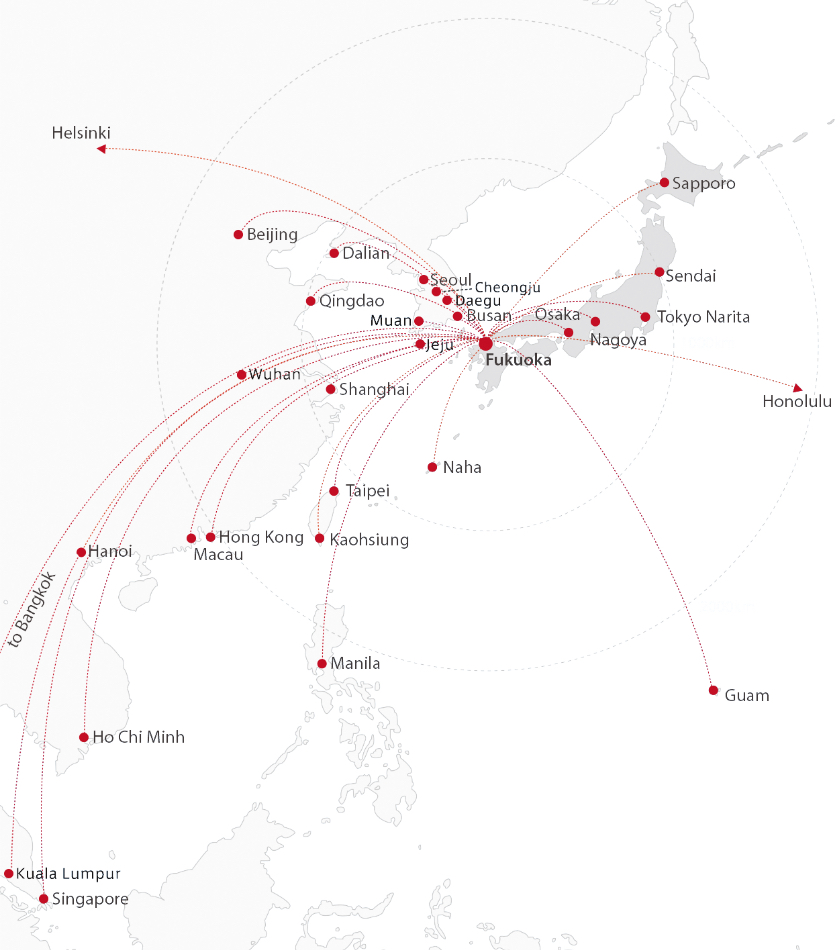
-
5 minutes from the city center to Fukuoka Airport No. 1 among 13 cities in Asia No. 2 among 48 cities in the world Fukuoka (Japan) 5 minutes San Francisco
(United States of America)12 minutes Singapore 20 minutes Materials: The Mori Memorial Foundation Institute for Urban Strategies
The Global City Power Index 2020
Excellent access to Fukuoka Airport!
-
Domestic Air Routes
- Domestic airlines offer 28 routes 362 flights/day
- Fukuoka – Haneda (Tokyo) 54 round-trip flights/day
* Fukuoka Airport Line (as of June, 2018)
-
International Air Routes
- Direct flights on 19 routes and 746 flights/week
- 90minutes to either Shanghai or Tokyo
A well-developed transportation network affords easy access.
-
The number of Shinkansen trains arriving/departing from Hakata (Fukuoka)
- Bound for Tokyo/Osaka 179 trips/day
- Bound for Kagoshima 122 trips/day
-
Kyushu Shinkansen Kagoshima Route
- Hakata – Kumamoto 33 minutes at the fastest speed
- Hakata – Kagoshima 79 minutes at the fastest speed
Number of trains on weekdays, excluding extras (As of June, 2015)
-
The number of highway buses arriving/departing from Fukuoka
- Tokyo/Kansai/All prefectures in Kyushu 32 cities 1,680 buses/day
Number of buses on weekdays (As of June, 2015)
REASONABLE COSTS
1 “tsubo” (3.3 square meters) is 9,697 JPY/month
-
Average office space rent (per “tsubo” unit) Approx. 50percent of Tokyo
Source: “Office Report”, MIKI.com, KK
*Average rents for May of 2018
*Survey subject: Major office buildings with total floor space of over 100 “tsubo” (approx. 330 sq. m.), located in the business district -
Average rent (IT industry) Approx. 80percent of Tokyo
Source: 2017 Wage Structure Basic Statistics Survey (The Japanese Ministry of Health, Labor and Welfare)
GLOBAL NETWORK
Global Startup Network 15 bases in 11 countries overseas
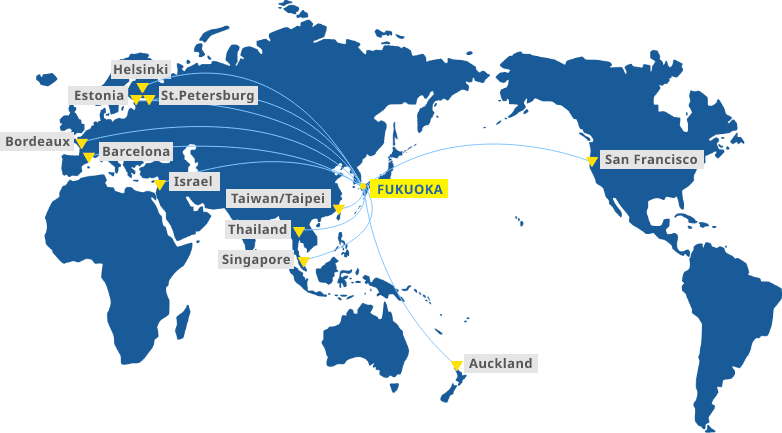
INDUSTRIAL HUB THAT OPENS
NEW BUSINESS
OPPORTUNITIES
Island City, an Advanced Model City in Fukuoka
-
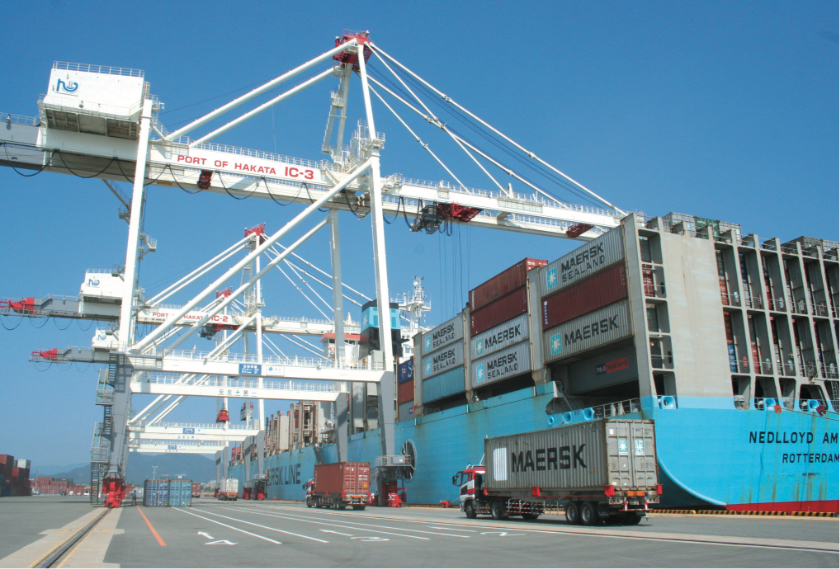
The Harbor-Building Area
Fukuoka City boasts significant infrastructure, such as a state-of-the-art container terminal with advanced logistics functions, to support global industries. With these facilities, we aim to create an international logistics hub linking us to Asia and the rest of the world.
-
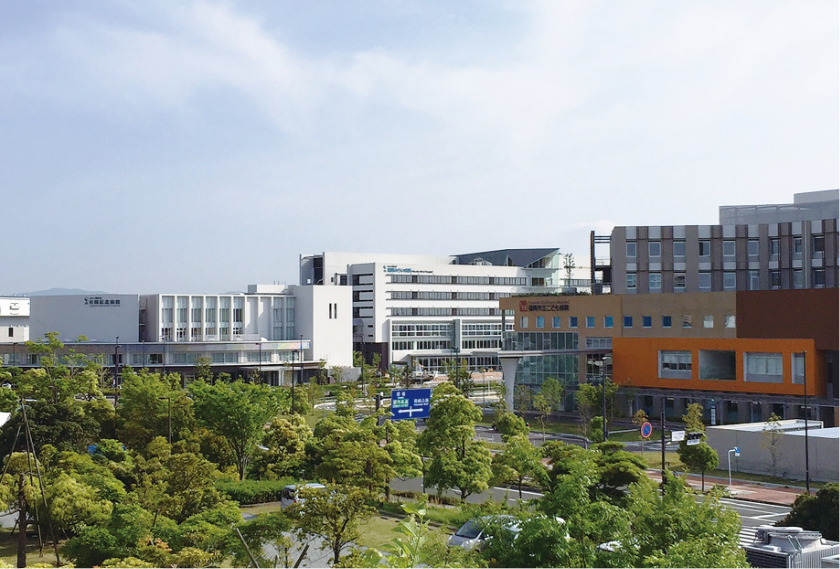
The Town-Developing Area
With an eye on Asia and the world beyond, Fukuoka City is promoting industrial cluster “towns” in fields such as health, welfare and medical care, as well as knowledge-based industries. We also support new businesses and R & D that will drive these clusters.
Knowledge and Nature Coexist at Kyushu University’s City of Academic Research

Kyushu University aims to construct a knowledge base suited for the Information Age of the 21st century.
Now more than ever, we are strengthening our ties with industry and local governments to create a city of academic research centered around Kyushu University.
02

NO.1 IN POPULATION INCREASE
AND THE
POPULATION GROWTH RATE
-
No. 1Population Growth
(Population growth from October 2010 to October 2015) -
No. 1 Growth Rate
(Growth rates from October 2010 to July 2015) -
(Reference) “Future Population Estimates for Major Cities”(Percentage increase from 2010)
- Sources: Future Japanese Population Projections, by region (March 2013, National Institute of Population and Social Security Research; Fukuoka’s municipal population was estimated by Fukuoka City (March, 2012)
Youth population rate: No.1. Among government-designated cities, Fukuoka leads Japan in its population of young people (in their teens and twenties).
-
Source: 2015 National Population Census (Statistics Bureau of Japan)
-
Source: Basic Report of Registered Resident Migration (Statistics Bureau of Japan)
Greater Fukuoka is No. 1in Japan for Startups Fukuoka City is ranked 1st in Japan in its business start-up rate and proportion of entrepreneurs. FY 2022 Startup Rate 6.3%
03
 Ease of Life in Fukuoka
Ease of Life in Fukuoka
Business people choose us!
”I’m glad to live here”
No.1in Japan
”It’s where I hope to live”
No.2in Japan
97%of Fukuoka City residents realize the ease of living here.

Work/school commute time
34.5 minutes
(Calculated for weekday, one-way trips)

Source: 2011 Basic Social Life Survey (Japanese Ministry of Internal Affairs) “Fukuoka Growth” (Fukuoka Asian Urban Research Center) The 7 major metropolitan areas of Japan with populations of over 1 million are the greater Kanto (Tokyo) and Kansai (Osaka) regions, Nagoya, Sapporo, Hiroshima, Sendai, and Fukuoka & Kitakyushu.
The cost of returning home by taxi
under 2,000 JPY
The cost of a drinking party
under 4,000 JPY
Source: FuKuZo3 (Miyoshi Real Estate Consumer-Oriented Market Research Institute)
Approx. 60 percent of Tokyo’s housing rental fees *For a 2-3 room apartment with a living and dining area (50-60 square meters), located within a 10-minute walk to a station

Source: “HOME’S” Real Estate & Housing Information Site (as of June, 2018)
04

WITH A VERY LOW RISK OF EARTHQUAKES,
FUKUOKA CITY IS LESS LIKELY TO BE DAMAGED
AT THE SAME TIME AS TOKYO
The risk of an earthquake occurring here is extremely low, and the risk of disaster occurring during an earthquake in Tokyo is also low.
-
The probability of a lower Shindo* 6 earthquake occurring within the next 30 years (*a Japanese measurement of seismic intensity on a scale from 0 to 7, with 7 being the maximum level of intensity)
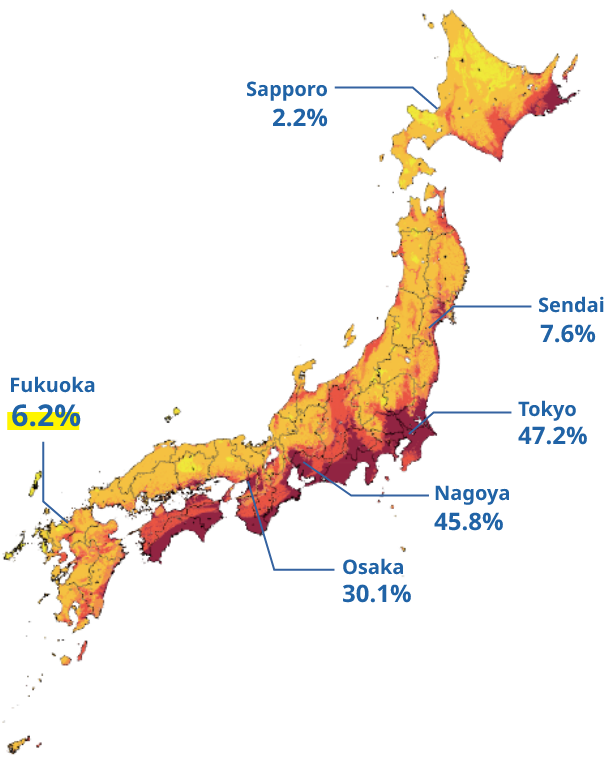
-
The Nankai Trough Massive Earthquake Seismic Intensity Distribution
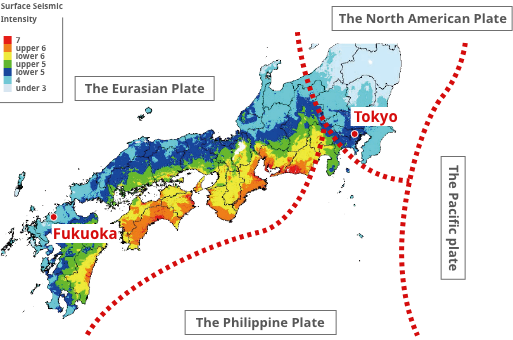
Source: Preparedness for Nankai Trough Major Earthquakes
(Final Report) The Cabinet Office of Japan









